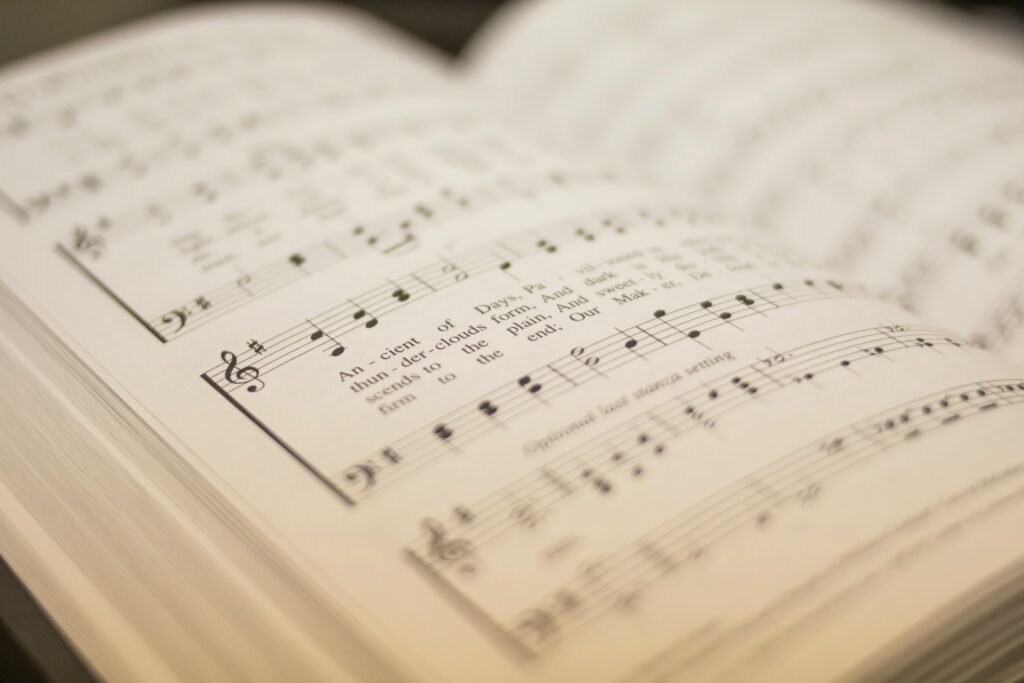
Part 1: Introduction | Part 2: Christ As Firstborn | Part 3: Every Knee Will Bow | Part 4: Morning Light | Part 5: Manifested, Vindicated | Part 6: Eternal Glory | Part 7: If and Then
Let’s look at one more place where Paul may have quoted an early hymn. It’s earlier in Paul’s writings than any of the others we’ve examined.
There is but one God, the Father,
from whom are all things
and we exist for Him;
and one Lord, Jesus Christ,
by whom are all things,
and we exist through Him
(1Co 8.6)
The parallelism and stanza structure of these lines is apparent. Commentator Mark Taylor observes, “The grammatical structure, precision, and conscious parallelism of the formulation … indicates its traditional character. … Whether or not Paul is transmitting a pre-formed received tradition or whether he himself crafted the pithy statement, cannot be known for sure.”
I’ll observe that since Paul is never shy about quoting other writers (e.g. Ti 1.12), there’s no reason this passage, and the others we’ve examined, couldn’t be in that category.
Of the 6 passages we’ve looked at so far, 4 have been focused on the Son, and 1 on the Father. The first one, from Colossians 1, included both persons, presenting Christ as the agent of accomplishing the Father’s plan. Similarly, this one, from early in Paul’s writings, distinguishes the Father and the Son, contrasting the persons, interestingly, in parallel.
And here it gets a little tricky. The contrasts are in the prepositions: “from whom” vs. “by whom,” and “for Him” vs. “through Him.” The reason it’s tricky is that in Greek, as in most languages, prepositions are pretty flexible; they have a broad range of meaning. For example, these statements have very different meanings:
- I eat ice cream with a spoon.
- I eat ice cream with chocolate sauce.
- I eat ice cream with my wife.
- I eat ice cream with delight.
It’s a truism in New Testament studies that anybody who bases his theology on a Greek preposition is foolish.
But Paul has set this passage up so that the prepositions are doing the heavy lifting. So we’re going to have to let them carry some weight. Let’s think a little about the contrasts.
It will help us, as always, if we consider the context. Paul is discussing the controversy in the Corinthian church between those who think it’s OK to eat meat that’s been offered in sacrifice to idols, and those who think it’s wrong. He begins his lengthy discussion—it includes all of chapters 8, 9, and 10—by laying a theological foundation:
- There are no gods besides God; there is no “god” behind any idol (1Co 8.4).
- Thus everything in the world—including meat—is made by God.
- Since everything God made is good, then meat is good.
His argument is going to get relatively complex, as we can deduce from its length. I’ve written on that before. But for our purposes here, we simply note that Paul is speaking of God’s creative work. And he’s going to distinguish the roles that the Father and the Son play in that work.
First, Paul notes that “all things” are “from God [the Father]” and “by Christ.” Traditionally, interpreters have taken this to refer to the Father’s “administrative oversight” of creation—envisioning, planning, designing, specifying—and the Son’s active agency in doing the creating. We might say that the Father is the architect of creation, while the Son is the contractor. Which one, then is the Creator?
Yes. :-)
Then Paul says that we exist “for” the Father and “through” the Son. Again, this seems to suggest the Father as administrator and the Son as agent.
But we face a danger here. There are not two Gods; God is one. And so Paul begins his comparison and contrast of the two persons with a clear statement that “there is but one God.” He identifies him as the Father here, but elsewhere (e.g. Ro 9.5) he makes it clear that he does not see the Son as anything less.
God is multiple in one sense, and singular in another. Here we have the basis for the doctrine of the Trinity.
There is more to this God than you will ever comprehend. But He invites us to know, love, and live with him forever.
Sing of him. Sing of his marvelous works.
Sing it in private and in public. Sing it to those you love, and to those you don’t. Make it what everyone who knows you thinks of when they think of you.
Sing.
Photo by Michael Maasen on Unsplash
